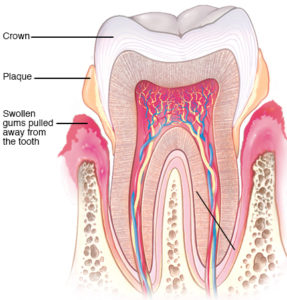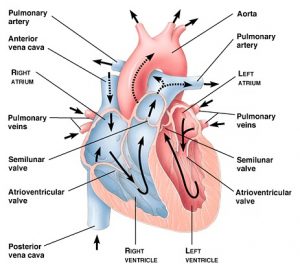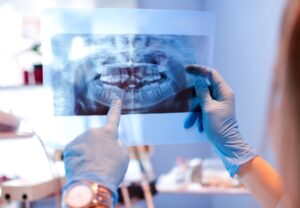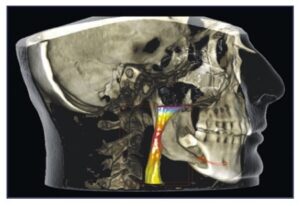Header logo
header top contact widget
Dental Fears
Alzheimer’s Disease, Dementia and Periodontal Disease
Posted on Aug 15, 2024 by William J. Claiborne, DDS MS
In information posted on the web site of the Alzheimer’s Association (www.alz.org),
“A recent analysis led by National Institute on Aging (NIA) scientists suggests that the bacteria associated with periodontal disease that causes the chronic inflammation are also associated with the development of Alzheimer’s disease and related dementias, especially vascular dementia.”
 Is there a more dreaded disease today than Alzheimer’s? Not only is the individual effected, entire families are devastated when dealing with a loved one’s diagnosis.
Is there a more dreaded disease today than Alzheimer’s? Not only is the individual effected, entire families are devastated when dealing with a loved one’s diagnosis.
In the U.S., it is the 6th leading cause of death.
https://www.alzheimers.net/resources/alzheimers-statistics/
By the year 2025, the number of people 65 and older with Alzheimer’s disease is expected to reach 7.1 million people, a 27% increase from the 5.6 million over the age of 65 in 2019.
In 2020, it was estimated that 11.6% of North Carolina adults aged 65 and over had some level of the disease. Currently, 10% of American adults 65 and over have Alzheimer’s disease. For people ages 85 and older, this increases to 32%.
By 2060, nearly 1 in 4 Americans will be 65 years and older with seniors over age 85 having tripled.
https://www.alz.org/media/Documents/alzheimers-facts-and-figures.pdf
As a periodontist in Asheville NC, I’ve been following the findings related to Alzheimer’s disease and periodontal disease. Yes, the connection between the two seems far-fetched, but research is showing there is a correlation.
First, allow me to explain periodontal (gum) disease. Gum disease is an inflammatory disease that attacks gum tissues, teeth, and the structures that support them. It is the nation’s leading cause of adult tooth loss. In addition to the problematic oral symptoms associated with gum disease, research has shown that the infectious bacteria are able to activate the development (or worsen the progress) of other diseases.
Because the bacteria of gum disease are able to enter the bloodstream through weakened oral tissues, studies have connected them to serious reactions elsewhere in the body. Some of these lead to the formation of cancer (oral, throat, pancreatic, lung) and some activate conditions such as diabetes and arthritis.
While the statistics of aging adults increase, nearly half of the adult population has some level of gum disease, over 47%. As a periodontal specialist in Western NC, I believe the high prevalence of gum disease among U.S. adults may be, in part, due to the assumption, “if it doesn’t hurt, nothing is wrong”. People also tend to brush off some symptoms as “normal,” such as seeing blood in the sink when brushing teeth.
Although symptoms of gum disease may include tender gums that bleed when brushing, gum disease can begin without any obvious signs. One study included over 8,200 adult at an average age of 63 at the study’s onset. The findings showed an increased propensity for developing dementia for participants who had severe gum disease and missing teeth.
Having no natural teeth was associated with a 26% increased risk. At the end of the study:
• 14% of individuals with healthy gums and all their teeth at the start of the study developed dementia by the end of the study
• 18% of participants with mild gum disease developed dementia
• 22% with severe gum disease (periodontitis) developed dementia
• 23% of those with no remaining teeth developed dementia
Eighteen years later, a follow-up study found those who had severe gingivitis in addition to tooth loss had a 22% higher risk for developing Alzheimer’s disease or dementia.
What researchers found is the bacteria present in periodontal disease are able to travel through the mucous membranes of the mouth to the brain. This is believed to cause potential brain damage.
Now, more than ever, maintaining a healthy smile is important for every adult. If you suspect you have gum disease (gums that bleed when brushing, tender or swollen gums, gums that have reddened or receded from teeth), be seen by a periodontist. This disease will only worsen without treatment.
Be committed to having excellent oral health as and make it a priority as an important part of your overall health. For a consultation to discuss how we can help you achieve optimal oral health, call 828-274-9440.
In addition to the treatment of all stages of gum disease and the reshaping of gum tissues, a periodontist is a specialist in the placement of dental implants. If you have lost teeth, dental implants are the ideal tooth replacement option.
Also, please know that our Asheville periodontal dental office offers many comfort options, including Oral and I.V. sedation. Oral sedation is a pill that helps patients relax. I.V. sedation (also known as ‘twilight sleep’) places the patient in a deeper sleep state and erases memory of the procedure. It is administered by a doctor of anesthesiology for optimal comfort and safety.
Connections of Oral Wellness and Overall Health
Posted on Aug 08, 2024 by William J. Claiborne, DDS MS
Over the past few decades, an increased number of studies have pursued the many connections of periodontal (gum) disease and our overall health. With the findings, research has become more focused with links found between infectious oral bacteria and a growing list of serious health problems.
Periodontitis is the most severe form of periodontal disease. It is a severe form of gum infection that damages soft tissues and destroys the bone that supports teeth. This occurs when toxins produced by the bacteria in plaque irritate the gums.
These toxins activate a chronic inflammatory response in which the body, which turns on itself. This systemic inflammation leads to break down and destruction of tissues and bone that support the teeth.
The potent bacteria of gum disease are able to enter the bloodstream through tears in weakened tissues. It is now known that it can trigger inflammatory reactions that are related to the development of the conditions mentioned above. While it can activate the development of serious health problems far beyond the mouth, it can also worsen others already underway.
The initial stage of periodontal disease is gingivitis. This may have mild symptoms or even some deemed “normal.” These include areas where the gums are tender or seeing blood in the sink when brushing teeth. However, gingivitis, if not halted, can soon progress to periodontal disease.
Gum disease symptoms include:
• Gums that loosen from teeth (or “recede”)
• Red or swollen gums
• Gums that bleed when flossing or brushing
• Persistent bad breath
• Teeth that may loosen or drift
Without treatment, gum disease worsens. Many people are unaware of the severity of damage capable by these infectious bacteria. Below are some of the correlations that may surprise you.
Using findings from previous research, studies have closely scrutinized two types of oral bacteria pathogens. Researchers found that one pathogen was far more prevalent in the saliva of participants who developed pancreatic cancer with a 59% increased risk of developing the deadly cancer. Just as alarming was that the second pathogen was shown to increase this risk by 50%.
The connections between periodontal disease and other diseases in the body also include a link between oral health and psoriasis. Psoriasis is a chronic disease that affects the skin. Its cause isn’t fully understood but seems to relate to the immune system turning on itself.
This condition causes the life cycle of skin cells to accelerate beyond normal. Cells build up rapidly on the skin’s surface, forming scales and red patches that are often itchy and sometimes painful.
In one study, researchers found that while “people with psoriatic arthritis had about the same rate of gum disease as those without joint inflammation, people with psoriatic arthritis were more likely to have severe gum problems.”
https://www.psoriasis.org/advance/prevention-tips-for-uveitis-stroke-and-gum-disease
Other studies have shown that people with periodontitis (advanced gum disease) are nearly 1.5 times more likely to develop psoriasis than people with healthy gums. Could one trigger the other, and vice versa?
Another study showed that 36% of people with psoriasis had one or more sites of bone loss measuring at least 3 millimeters (over a tenth of an inch). This was compared to 13% of people without psoriasis.
For people who have rheumatoid arthritis (RA), many are learning that research is noting close connections with arthritis and gum disease, too.
RA is a debilitating, painful disease that destroys joints. RA often emerges gradually, initially causing morning stiffness and weak, sore muscles. As inflammation from RA worsens, joints become swollen. Joints become achy and stiff most often in the fingers, wrists, elbows, hips, knees, ankles, toes, and neck. Unfortunately, there is no cure for RA.
Apparently, gum disease and RA share a genetic similarity. The clinical makeup shows similar structures, primarily in pathogens that spark disease or illness. Research has found that the pathological process that occurs in both gum disease and RA are nearly identical.
Both conditions cause chronic inflammation in tissues that connect to bone with both diseases having a similar inflammatory trigger. Even more similar is the particular species of bacteria found in periodontally-diseased tissues when compared with tissues around arthritic joints. In one study, a particular pathogen associated with periodontal disease was found to activate the same destructive process of rheumatoid arthritis.
 Another example of damage possible by the infectious bacteria of periodontal disease is coronary artery disease. The heart disease connection, as explained by Harvard Medical School’s newsletter, states:
Another example of damage possible by the infectious bacteria of periodontal disease is coronary artery disease. The heart disease connection, as explained by Harvard Medical School’s newsletter, states:
“In people with periodontitis (erosion of tissue and bone that support the teeth), chewing and toothbrushing release bacteria into the bloodstream. Several species of bacteria that cause periodontitis have been found in the atherosclerotic plaque in arteries in the heart and elsewhere. This plaque can lead to heart attack.
“Oral bacteria could also harm blood vessels or cause blood clots by releasing toxins that resemble proteins found in artery walls or the bloodstream. The immune system’s response to these toxins could harm vessel walls or make blood clot more easily. It is also possible that inflammation in the mouth revs up inflammation throughout the body, including in the arteries, where it can lead to heart attack and stroke.”
http://www.health.harvard.edu/press_releases/heart-disease-oral-health
And the list goes on, even including connections between periodontal disease and erectile dysfunction (ED). For men in the 40 – 70 age group, ED affects over 40% with nearly 70% of men at age 70 affected.
One study of 162 males ages 30 to 40 by Turkish researchers, 82 of the participants had normal erection function while 80 who complained of ED, nearly half. Some men in both groups had chronic periodontitis, but the condition was more than twice as prevalent in the ED group.
In another study, 80 male participants who had severe gum disease were more than twice as likely to suffer from erectile dysfunction. This was true even after adjustments were made for other issues that could distort the findings.
Gum disease affects nearly 47% of American adults. It will worsen without treatment and, to no surprise, is the nation’s leading cause of adult tooth loss. As an Asheville periodontal specialist, I have an up-close view of the damaging effects of gum disease.
If you are experiencing signs of gum disease, start with a thorough periodontal examination. Call 828-274-9440 or ask our friendly staff about beginning with a consultation.
If dental fears have caused you to delay or avoid having regular dental care, many treatments can include oral or I.V. sedation (sleep dentistry, or “twilight sleep”).
And, if financial constraints are an obstacle in receiving treatment, we offer several payment plans. Most are interest-free with no down payment required (for qualified individuals). Feel free to ask about these during your consultation.
When Trepidation Keeps You From Going Further For The Smile You Desire
Posted on Jul 31, 2024 by William J. Claiborne, DDS MS
In my 30-plus years as a periodontist in Asheville, I’ve treated hundreds of patients who comes with a variety of needs. Some need treatment that involves the gum tissues, including:
• all stages of gum disease (gingivitis, pregnancy gingivitis, periodontal disease, periodontitis)
• reshaping gum tissues for esthetic enhancement (crown lengthening, correcting ‘gummy smiles’, repairing gum recession)
• diagnosis and placement of dental implants
• treating lesions or cysts in oral tissues
Over the years, I’ve seen adults of all ages who have the ultimate desire for a healthy, confident, and even more attractive smile. While many come to our Western NC periodontal dental office through the referral of their general dentist or another dental specialist, we also see a number who are referred by someone they know (often a past patient) or those who have found us online.
We are happy to welcome all new patients, even those who come to us with trepidation. And, trepidation is something my team and I understand.
While some individuals admit to having dental anxiety or fear, others aren’t in the category of being a fearful patients. Some are holding something in that even they cannot pinpoint, although its a reservation that we can often work through. Their trepidation tends to wane once the patients become more familiar with our skills, technology, and unique features.
To begin, patient comfort is a high priority in our our Asheville periodontal practice. While we are widely known for an environment of comfort and respectful care. This is because, in part, over 70% of the adult population have some level of dental fear or anxiety. The other part is that we would want such an approach to care for ourselves and our loved ones.
For optimal comfort and relaxation, we offer several sedation options, including oral and IV sedation.
• Oral sedation is a pill that helps patients relax. It also has an amnesiac effect, leaving most with little or no memory of treatment afterward.
• I.V. sedation (also known as ‘twilight sleep’) places the patient in a deeper sleep state and erases memory of the procedure. It is administered by a Medical Doctor (MD) who is a board certified Anesthesiologist.
With both sedation options, patients are closely monitored with advanced safety equipment throughout treatment.
We also have a reputation for featuring some of the most advanced technology available, much of which is not available in other dental or periodontal offices in this region. These features help to diagnose with precision, treatment plan with superior accuracy and reduces the patient’s treatment time while optimizing comfort.
Advancements in today’s dental technology are remarkable. Whether the patient’s need is the restoration of gum health or the replacement of missing teeth through dental implants, the advanced skills of a periodontist can help minimize treatment time and complexity of treatment.
In our periodontal dental office, some of the features that help enhance comfort, optimize treatment outcomes, minimize treatment, and speed healing include:
LANAP Protocol Using PerioLase MVP-7: Efficiently and effectively treats periodontitis (advanced gum disease) with laser technology. It causes very little discomfort and has a quick recovery time. This has also been found to stimulate bone regrowth in damaged areas.
Dental Radiology With 3-D Cone Beam Technology: This imaging is ideal for diagnosis and treatment planning. The imaging covers the entire dentition area with clear views of the mandible and maxilla (upper and lower jaw).
CareStream Cone Beam Computer Tomography Imaging: This computerized tomography provides imaging in exceptional detail and range.
CS 3600 intraoral scanner: Patients no longer have to endure having impressions made with bulky, gloopy trays held in their mouths! This quickly and comfortably scans the mouth’s interior for digital impressions using a small, handheld scanner. It can also reach difficult–to–access areas in the patient’s mouth with improved patient comfort.
Simplant Dental Software for Computerized Dental Implant Placement: This system helps in pre-surgical positioning of dental implants on the computer, using a 3D model of the patient’s jaw. This aids in the selection of the implant type that ensures a precision fit.
Intraoral Camera Technology: This provides outstanding quality of images within the mouth. These images are sent to screen for a clear, crisp view so we can confer with patients on specific treatment issues.
Computer Imaging In Treatment Suites: Treatment suites are equipped with computers for convenient image sharing with patients.
Advanced Sterilization: Our custom sterilization unit adheres to (or exceeds) CDC guidelines for instrument processing protocols, particularly in the cleaning of instruments.
Fully-Equipped Surgical Suites: Relax during treatment while surrounded by beautiful mountain views of Asheville.
Once a patient who had reservations understands the amazing environment we offer for their periodontal dental needs, they tend to relax. For those who have periodontal (gum) disease, proceeding with treatment has a more urgent timetable, which has to do with their overall health.
Gum disease is the nation’s leading cause of adult tooth loss. Yet, the bacteria that destroy gums and the structures that support natural teeth don’t always remain confined to the mouth. Through tears in diseased gum tissues, these infectious bacteria can enter the bloodstream.
Once blood borne, the bacteria are able to activate or worsen serious conditions in the human body. Research has correlated oral bacteria to a long list of serious health problems. These include heart disease, stroke, Alzheimer’s disease, arthritis, diabetes, preterm babies, erectile dysfunction (ED), some cancers (including pancreatic), and more.
It is estimated that over 47% of American adults have some level of periodontal (gum) disease. This disease is the nation’s number one cause of adult tooth loss. However, gum health needs to be seen by the general population as a vital player in one’s overall health.
I believe that our population would be more committed to their oral wellness with a more widespread understanding of the hazards of gum disease in the U.S. This is why it is important to be familiar with the signs and symptoms, which include:
• Red, swollen or tender gums or other pain in your mouth
• Bleeding while brushing, flossing, or when eating certain foods
• Gums that are receding (pulling away from the teeth) or make the appear teeth longer than normal
• Loose or separating teeth
• Pus between your gums and teeth
• Sores in your mouth
• Persistent bad breath
• A change in the way your teeth fit together when you bite
• A change in the fit of partial dentures
If you have any of these, you are urged to seek periodontal care as soon as possible. This disease will only worsen without treatment.
There are so many connections between your oral health and your overall health that are yet to be known. Yet, the more research delves into this, the more comes to light. An illustration of this is research at Case Western Reserve University School of Dental Medicine. In this recent study, they found that humans with fewer fat cells are better able to combat periodontal (gum) disease. This is because fat cells trigger inflammation in the body.
In the study, 31 obese people who had clear indications of gum disease were monitored. Half of the group had gastric bypass surgery with fat cells removed from the abdomen. Those in the other group had not had gastric bypass surgery or fat removed.
Researchers noted that the majority of the bypass surgery group had a drop in their glucose levels following the procedure. This is a positive outcome based upon the higher risk of overweight people for diabetes and insulin-related problems.
All study participants underwent non-surgical periodontal treatments and were provided oral hygiene instructions for at-home care. While both groups showed improvement, the surgery group had better results.
https://www.sciencedaily.com/releases/2011/11/111109111540.htm
If you have oral wellness needs, want to replace teeth through dental implants, esthetic goals with the involvement of gum tissues, or have dental fear that has prevented you from receiving regular dental care, let’s sit down together and discuss ways we can help you.
If financial concerns are an issue, we offer several payment plans. These often break treatment fees into monthly payment amounts that are manageable to most budgets. Most have no down payment required and are interest-free.
Call our Asheville periodontal office at: 828-274-9440 and speak with our friendly staff. You can begin with a consultation, if desired.
Dental Implants Done To Perfection!
Posted on Jul 23, 2024 by William J. Claiborne, DDS MS
In our Western NC periodontal dental office, we see many patients who are contemplating tooth replacement through dental implants. This can be a complex decision, as today’s implant dentistry offers many choices that are important to achieving a desirable outcome.
This is why accurate, personalized information is best left to a credible, knowledgable source. As a periodontal dental specialist for over 30 years, I have advanced training in all types of dental implants as well as the procedures that may be needed to ensure your investment brings lasting satisfaction.
Over the years, I’ve found that many patients have misconceptions when it comes to dental implants. My desire is to help to dispel the incorrect information so each individual understands the realities when it comes to dental implants.
There are over 40 different implant systems, each designed to accommodate various needs and goals. For example, one consideration in determining which type of dental implant is recommended is in the amount of jaw bone mass.
An implant needs a particular amount of bone structure to support it. After several years of missing tooth roots, the bone begins to decline in mass. For people who wear a denture or partial, the pressure of wearing these appliances can actually speed up the rate bone loss.
So, depending on the amount of bone present to support the implant(s), the choice of which implant system to recommend can be made. For some, we may recommend a bone rebuilding process prior to implant placement. Or, we may advise an implant that uses unique implant lengths and placement angles (the “All-On-4”) that can overcome the challenges of bone loss.
There are also many considerations in selecting the right type of dental implant. The final choice, of course, is the patient’s preference. Does he or she want an implant that is non-removable (“fixed”)? Is cost the determining factor? Does the patient need just one implant or several? Can one implant support a “bridge” of teeth in one area? And so on.
These are just some of the factors we take into consideration when discussing dental implants with patients. It is in our experienced, skilled hands that we recommend one system over another. What’s online or from opinions of others may create confusion and even dissuade you from pursing this ideal option to replace missing teeth.
One misconception is that dental implants are more expensive than other tooth replacement options (dentures, partials, crown-&-bridge). However, they are actually a bargain when all areas are considered. Dental implants do not rely on the support of neighboring teeth. This means that crowning otherwise healthy, natural teeth is not necessary.
The investment made in dental implants is a wise one. Dental implants have one of the highest of all success rates of any implant-in-bone procedure (such as hips, knees), up to 98 percent. Made of titanium, this metal successfully bonds with living bone. This means the bone will grow around your implant(s), integrating it into your bone mass to restore dependability and stability.
Being implanted into the jaw bone, dental implants also restore stimulation that reduces risks for further bone loss. This halts bone shrinkage so you avoid problems associated with resorption. These include an aged facial appearance (such as deep wrinkles around the mouth and formation of jowls), a weakened jaw bone, and the higher risks for continued tooth loss.
Some people also assume that an implant is needed for each missing tooth. That’s not the case for many of our implant patients. The implanted portion of a dental implant can often support two teeth or a bridge of several teeth. When 4 – 8 implants are strategically placed, they may be able to support a full arch of teeth, which often includes non-removable types.
To optimize dental implant success, we have specialized skills to incorporate the more-complex procedures involved in implant placement. For example, a periodontist can incorporate bone rebuilding procedures into treatment to a proper depth. This specialist can also help to restore bone that has occurred in the mandible (lower jaw) or maxilla (upper jaw), which may also require a sinus lift.
In our Asheville periodontal dental office, we offer implant diagnosis (using the benefits of advanced technology) for placement with the pre surgical advantages of achieving optimal oral health. Here, we feature some of the most advanced imaging and computerized technology available in the industry. Those specific to dental implant diagnosis and placement include:
LANAP Protocol Using PerioLase MVP-7: Efficiently and effectively treats periodontitis (advanced gum disease) with laser technology. It causes very little discomfort and has a quick recovery time. This has also been found to stimulate bone regrowth in damaged areas.
Dental Radiology With 3-D Cone Beam Technology: This imaging is ideal for diagnosis and treatment planning. The imaging covers the entire dentition area with clear views of the mandible and maxilla (upper and lower jaw).
Simplant Dental Software for Computerized Dental Implant Placement: This system helps in pre-surgical positioning of dental implants on the computer, using a 3D model of the patient’s jaw. This aids in the selection of the implant type that ensures a precision fit.
These technologies help to optimize patient comfort and treatment success as well as minimize treatment, meaning that patients are never over-treated. Too, healing time is typically reduced, thanks to these specialized measures.
Additionally, we make patient comfort a high priority. We are known for making patient comfort a high priority in all procedures. In addition to many measures of creating a comfortable visit, we offer Oral and IV sedation (“twilight sleep”). Both are safely administered by highly qualified medical professionals who use advanced safety monitoring equipment.
Dental implants are the next best thing to natural teeth. They feel like “real” teeth, look beautiful, and restore a confident, comfortable ability to bite and chew. If you have thought about replacing missing teeth or are frustrated with a denture or partial, call 828-274-9440 to arrange an appointment.
When it comes to your smile, be an informed consumer and avoid hype or misguidance. In one visit, I feel we can help you understand how the selection of a periodontist can be your first step in a successful outcome and a smile you’ll love to share!
Recent Posts
Categories
Archives
- September 2024
- August 2024
- July 2024
- June 2024
- May 2024
- April 2024
- March 2024
- February 2024
- January 2024
- December 2023
- November 2023
- October 2023
- September 2023
- August 2023
- July 2023
- June 2023
- May 2023
- April 2023
- March 2023
- February 2023
- January 2023
- December 2022
- November 2022
- October 2022
- September 2022
- August 2022
- July 2022
- June 2022
- May 2022
- April 2022
- March 2022
- February 2022
- January 2022
- December 2021
- November 2021
- October 2021
- September 2021
- August 2021
- July 2021
- June 2021
- May 2021
- April 2021
- March 2021
- February 2021
- January 2021
- December 2020
- November 2020
- October 2020
- September 2020
- August 2020
- July 2020
- June 2020
- May 2020
- April 2020
- March 2020
- February 2020
- January 2020
- December 2019
- November 2019
- October 2019
- September 2019
- August 2019
- July 2019
- June 2019
- May 2019
- April 2019
- March 2019
- February 2019
- January 2019
- December 2018
- November 2018
- October 2018
- September 2018
- August 2018
- July 2018
- June 2018
- May 2018
- April 2018
- March 2018
- February 2018
- January 2018
- December 2017
- November 2017
- October 2017
- September 2017
- August 2017
- July 2017
- June 2017
- May 2017
- April 2017
- March 2017
- February 2017
- January 2017
- December 2016
- November 2016
- October 2016
- September 2016
- August 2016
- July 2016
- June 2016
- May 2016
- April 2016
- March 2016
- February 2016
- January 2016
- December 2015
- November 2015
- October 2015
- September 2015
- August 2015
- July 2015
- June 2015
- May 2015
- April 2015
- March 2015
- February 2015
- January 2015
- December 2014
- November 2014
- October 2014
- September 2014
- August 2014
- July 2014
- June 2014
- May 2014
- April 2014
- March 2014
- February 2014
- January 2014
- December 2013
- November 2013
- October 2013
- September 2013
- August 2013
- July 2013
- June 2013
- May 2013
- April 2013
- March 2013
- February 2013
- January 2013
- December 2012
- November 2012
- October 2012
- September 2012
- August 2012
- July 2012
- June 2012


